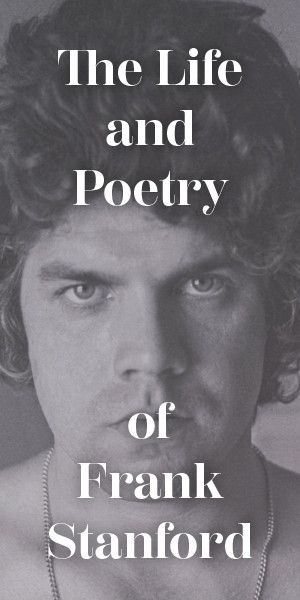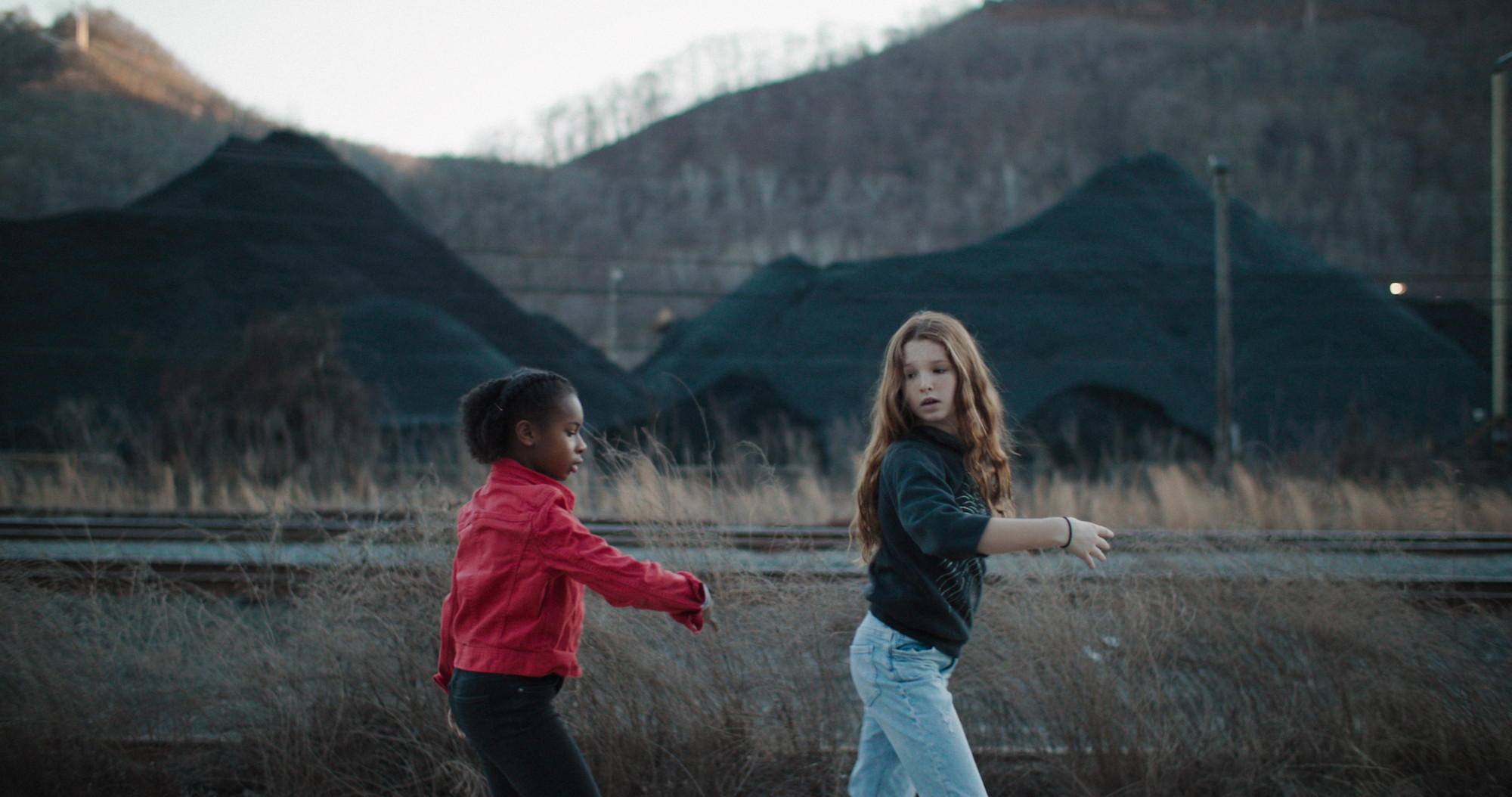
Still from King Coal by Curren Sheldon
A Dream about a Ghost Is Not a Nightmare
On King Coal and mythology in Appalachia
By Courtney Balestier
I f you’re hearing this, seeing this, know: This place knows how to dream. Elaine McMillion Sheldon says this in the final seconds of her new film King Coal, a layered and elegiac ghost story about coal’s persistent, existential sway over our home state of West Virginia. She is talking about hope. About the kind of dream that tickles the back of your mind, that—while your rational brain shakes its head—whispers, well, but maybe. This type of dream, I don’t think it’s that dissimilar from a ghost story like the one that King Coal tells. They are simply two different ways to be haunted.
I won’t go so far as to say that you can’t have one without the other, dream and ghost story, but I will say that in West Virginia I believe we have always had both. To be West Virginian is to know that the weight of what you want can crush you as much as the weight of what you have.
This is what King Coal is about for me, someone who was once a thoughtful and precocious young person in West Virginia, like the two girls at the film’s center. (In keeping with King Coal’s lyrical, genre-melding approach to documentary, no subject or setting is identified by name.) Together, the girls dance on quiet country roads and chase fireflies and talk about what they want to be when they grow up. One wants to work for the FBI, or maybe be a nurse. The other wants to get a dance scholarship and a Ph.D. in law, so that she can have a second career after her tenure with the New York City Ballet.
If these sound like normal experiences for kids to have, they are; but these girls are having them in the last chapters of a fairy tale. Their whole lives, they have been steeped in the legend of King Coal: a powerful ruler, a benevolent industry (except when it isn’t), and a source of unimpeachable pride so intrinsic that it calls to mind the young fish asking what water is.
Coal has provided for the girls’ families, and stolen from them. It has defined the entire world around them. But now, as McMillion Sheldon’s poetic voiceover narration explains, the king is—well, he’s not quite dead, but he’s not quite alive either. He is trapped in a liminal realm, ribbons of unfinished business spooling from his royal robes. And the girls, like all of us who come from this land, are tasked with finding their place, both in the great roiling narrative the king has created and on the blank pages that will follow.
The king finds himself in this bardo because the economics of coal are changing—have been changing for decades—but King Coal is not a film about economics. There are successful economies all over the world, and rarely do they cross the line into mythology. King Coal is a film about identity, and this is its strength: using this archetypal narrative conceit of fairy tale kings and kingdoms as a container for examining the power that these lived mythologies hold over us, their power over the stories we tell about ourselves. And, then, for examining the circumstances under which we are called to question those stories.
Growing up in West Virginia, I knew that “King Coal” was real even though I had no familial connection to the state’s mining industry. He had his pledges of allegiance just like any monarch. “Friends of Coal.” “Coal keeps the lights on.” There are, as King Coal documents, coal-related beauty pageants, community races, and football traditions. But King Coal also documents the traditions that have run counter to this narrative: the Battle of Blair Mountain, a defining moment in the history of workers’ rights; the environmental protests against mountaintop removal; and the shadowy practices that have left miners injured and disabled without proper compensation.
One reason we tell fairy tales to children is because they are simple. Bad people behave deviously, good people righteously, and happy endings abound. The story is easy to follow, even if it’s not true. The truth is that reckoning with coal’s stature in West Virginia has never been simple. Even the boom years brought trauma, struggle, destruction. In one stunning piece of the archival footage that’s interspersed throughout King Coal, a great Mingo Oak tree becomes diseased and must be felled; it had suffocated in the polluted air of the mining camp.
This kind of nuance can be hard to articulate, harder still to be heard against the loudness of so much pride. Coal mining is dangerous work. It can be deadly work. And it has given West Virginians food, clothing, shelter, savings. It has even made a few West Virginians rich—just not as rich as it has made the outsiders who own our land.
And so, speaking against coal in any way can sometimes feel like being a pacifist in a war you did not ask for. You rush to explain that you support the troops, but not the fight, which often feels as rigged as the carnival game the girls at the center of King Coal play one night. You are loyal, to a point. But you are not a loyal subject.
King Coal excels in this sticky, ambivalent space—in creating a structure where we can safely complicate the simple story we’ve lived in for so long, the coal-keeps-the-lights-on fealty that’s enforced, from within and without, even when it hurts us. The film makes room for respect—reverence, even—as well as critique. And, in its haunting finale, it says the hardest truth out loud: The king won’t live forever; he’s barely alive now.
And so there is a funeral. It is respectful and solemn and as complicated as the rest of McMillion Sheldon’s film, featuring a combination of old traditions and personal stories and—in one breathtaking scene—a funeral ballad written for the film by British folk singer Sam Lee and exquisitely performed by Lady D, West Virginia’s “First Lady of Soul.”
Shake the coal dust cloud off my funeral shroud, she sings. From my black-baked lungs may my spirit be sprung.
And in confronting this reality, opening the windows and raising our voices so the king’s heavy soul can escape, the film says another, greater truth out loud: We have always been here. And long after the king is dead, we will be here still.
COURTNEY BALESTIER: I really love the way that time and space collapse in this film. Does King Coal have a chronology to you?
ELAINE MCMILLION SHELDON: It's more memory-based. It’s more of a mosaic structure tied together by memories, like the Mingo Oak tree falling, that were strictly based on what was in the archives. And then the 1960 section felt needed [later] in the film, after you’d just learned a bit about the unions. So the chronology was based more on “Okay, here’s a memory. But then let’s complicate it with a memory you probably don’t know.”
I wanted it to feel timeless. When you watch that 1960s footage, people are still saying that stuff today. And then geologically timeless, too: how coal is formed and moving from the mine to the moss forest.
Something that adds to that atmosphere that you're describing is that nobody is identified. I like that a lot because—especially as somebody who's grown up there—you can put yourself right onto the characters. How did that come about, both the labeling choice and having the two kids at the center of the film?
I was really trying to lean into making the region feel like a kingdom, not a traditional doc where you see us move from state to state and we name everything. It felt more important to say there was a unification of place and people.
Lanie Marsh and Gabby Wilson—they’re both dancers that live in West Virginia. Molly Born, my co-producer, went scouting at dance studios looking for girls that were around this age that had some connection to coal in their families and would be interested in doing this. So they were cast, but their scenes were not scripted. They were set up: “We’re going to give you the homework supplies to do this coal project.” And what they said is what they said and what they did is what they did.
I wanted to show images of this place that I don’t feel have been shown, like [the girls] being very playful and finding beauty and dancing in front of these big industrial piles. I sort of nod to Barbara Loden’s [1970 film] Wanda, where this tiny woman is walking past these huge coal piles. So there were images that I wanted, like “Go dance over there,” or “Let’s go to the fair and we’ll give you tickets to ride the rides.”
There are a couple of different threads that I want to talk about stemming from what you just said. One thing is that I love that when they're in there working on that project, and Lanie reads that prompt “Is coal important to your family?” And Gabby says, “No, not really.” And then Gabby’s family tells her this whole story about her great-grandfather in the mines. But she didn’t know!
When she first applied, we didn’t think she had a direct connection. And then I met her grandma, and her grandma told me she grew up in a coal camp. But she didn’t think Gabby knew that her [great-grandfather] was a miner. So while the film is a hybrid in the sense that the girls were cast for these roles, it took on a whole nonfiction, memory-making side too. That was also the first time Gabby's mother had been there and heard these stories.
It was really cool to see new memories be made or old memories be made new. It’s kind of what the film is all about: What do you want to take from this identity that has influenced you so much, and how does that influence you in the future?
The other thing I wanted to discuss on that point—that I can’t believe this all happened spontaneously, cause it was so striking to me—was the fair scene. First of all, visually, I love the cut from the fair to the coal chutes, because I always thought they were rides when I was a kid.
I always wished they were, right? I was like, wouldn't it be fun to be like, on a potato sack?
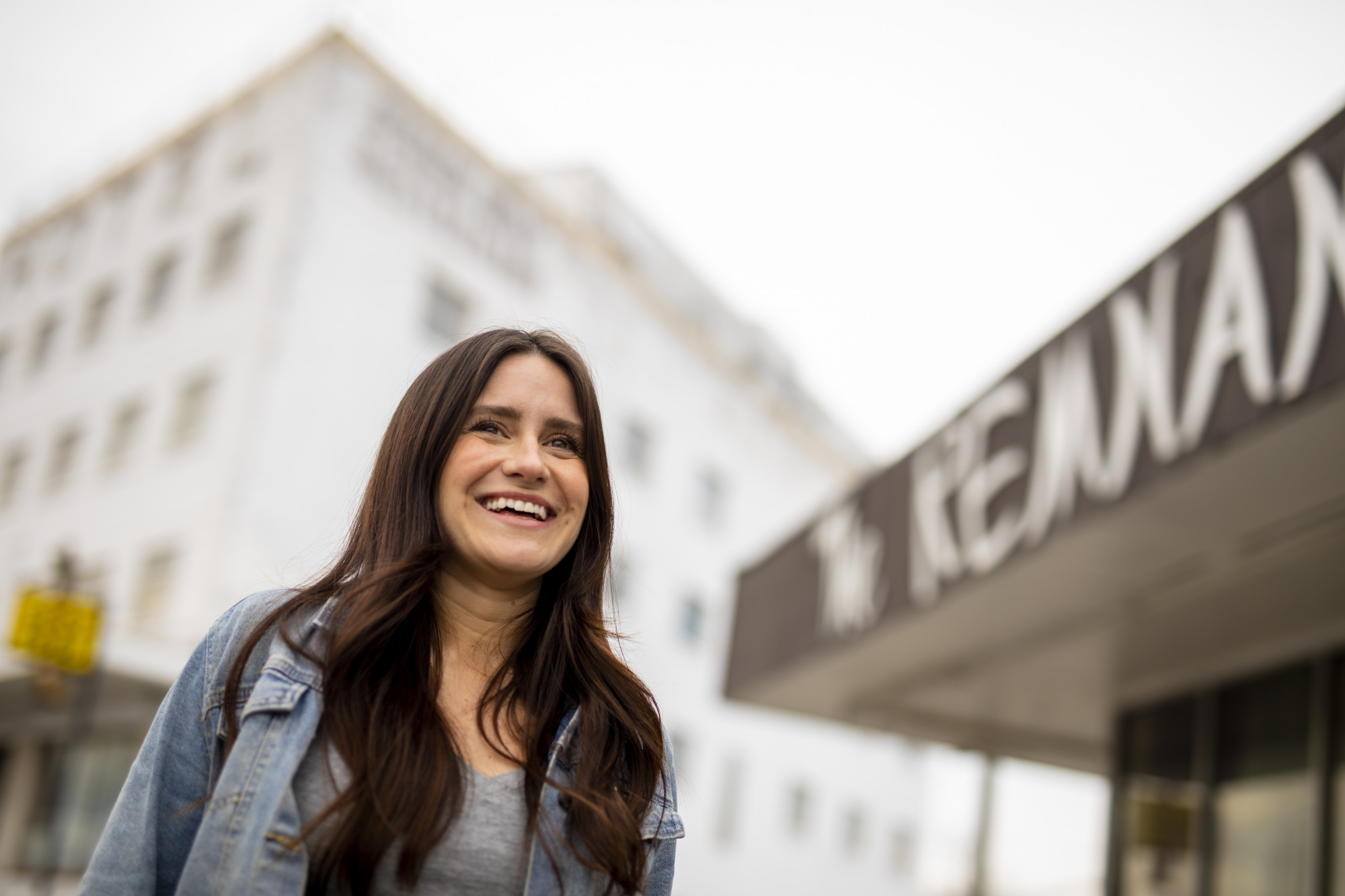
Photo of Elaine McMillion Sheldon by Steven Bridges
But the girls are playing this game—which is just so bogus, you know, like rigged fair games—and they win these fish. And Gabby says she feels bad for these little fish, and Lanie says, “There’s a whole bucket of them.” And I was just like, Oh my God, this is a perfect metaphor for our entire state: There’s a whole bucket of them. Don't worry about it.
There were so many things like that. Even their talk about growing up or what they want to do in the future. Lanie's first thing is like, “I want to be an FBI agent but I’ll probably be a nurse.” That young-people's view of like, “I wanna do this thing that's kind of crazy and outside the box. But it might make me leave here. So I wanna do this other thing that lets me stay here.” And then Gabby's just like, “I'm off.” And I was the “I'm off” kid.
So was I.
So when that conversation was happening, I was like, This is incredible. I couldn't have known they were gonna say these two paradigms that kids face in this region.
Speaking generationally too, I loved your grandfather. First of all, he just has such an incredible face for exactly what you're trying to convey. We both think in our work about generational trauma and generational memory, what you know beyond what you intellectually know. And I feel like his face just wears all of that.
Yeah, it’s like a map.
Did you learn anything new from him? Did stuff come up that you didn’t know?
Pawpaw, I mean, gosh I learn something new every time I sit down with him. He took on this mythical character, too. He doesn't really speak in the film. I really wanted to use him as this sort of larger than life elder. He holds an incredible amount of contradictions about his own life—about the union that he was in, about why he chose to do what he did. And so that's what the film's trying to do, trying to say. Not all things are just good or bad, and he's such an inspiration for us walking that line in the film.
When COVID hit and we couldn't film anymore, I started digging in my family archives. I went up to my ninety-plus-year-old great-uncle's house, who documented our family all through the ’40s, ’50s, ’60s, ’70s, just this incredible archive of daily life in the holler. And so those became portals into the past, but also kind of into the future: What they respected about the land and being alive in the mountains in that day and age felt very similar to what I was trying to say today. Like, Maybe we should think about decentering this king. We should think about the other riches around us, including one another. And I was finding evidence of that in these photographs.
In the voiceover, you mention the tension between loyalty and truth. As we both know, that’s something incredibly difficult to navigate whenever you're trying to make art about this place. And I think in this structure of mythology, these fairy tale beats we’re all familiar with, you’ve created a container where all these contradictions can breathe more. The whole conceit that you're playing with of having to do this proper burial, or the ghost being trapped. You know, we’ve been there for decades. And I think this film gives you permission to feel the complicated way that you feel — about these things that are very complicated, but don't actually often get to be complicated.
My mom is really the one who came up with the ghost thing. I was struggling with writing the script, trying to figure out King Coal’s arc. Because, you know, coal prices were like four times higher than they’ve ever been in history during COVID. We can’t say it’s dead. But that’s not what we’re talking about; we’re not talking about tonnage. So I asked my mom, where is King Coal? Is he alive? Where is he?
And she said, I guess you could say he's a ghost. And then I was like, Oh it’s a ghost story, and everything fell into place. Because we didn’t have to worry about time and chronology and explaining the boom and bust of the coal industry. It was just: If they are hanging around, they have unfinished business, and so we must also have unfinished business. We didn't know if that funeral scene would even work. We just asked people to come to the top of the mountain, wear black, and carry a casket up the hill. And what they said is what they said.
Were you nervous to tell people, “We're gonna hold a funeral for King Coal”?
I was so scared. It's crazy how people were just like, “Yeah, that makes sense. Seems like something we need to do.” It was amazing. And people from all walks of life were there.
We were sitting there watching this like, What we're doing right now is resonating so deeply with these people. They've been thinking about this question about how to say goodbye to this thing, whatever we wanna call it: a him, or entity, or a ghost, or whatever. We were not the first person to ask them, What do you want to say, to say goodbye?
That scene was so healing for so many people, and very real, even though it was set up. So it just taught me so much more about how limited my view of cinema was before this film and how it can be used in the moment for a real-life grieving process.
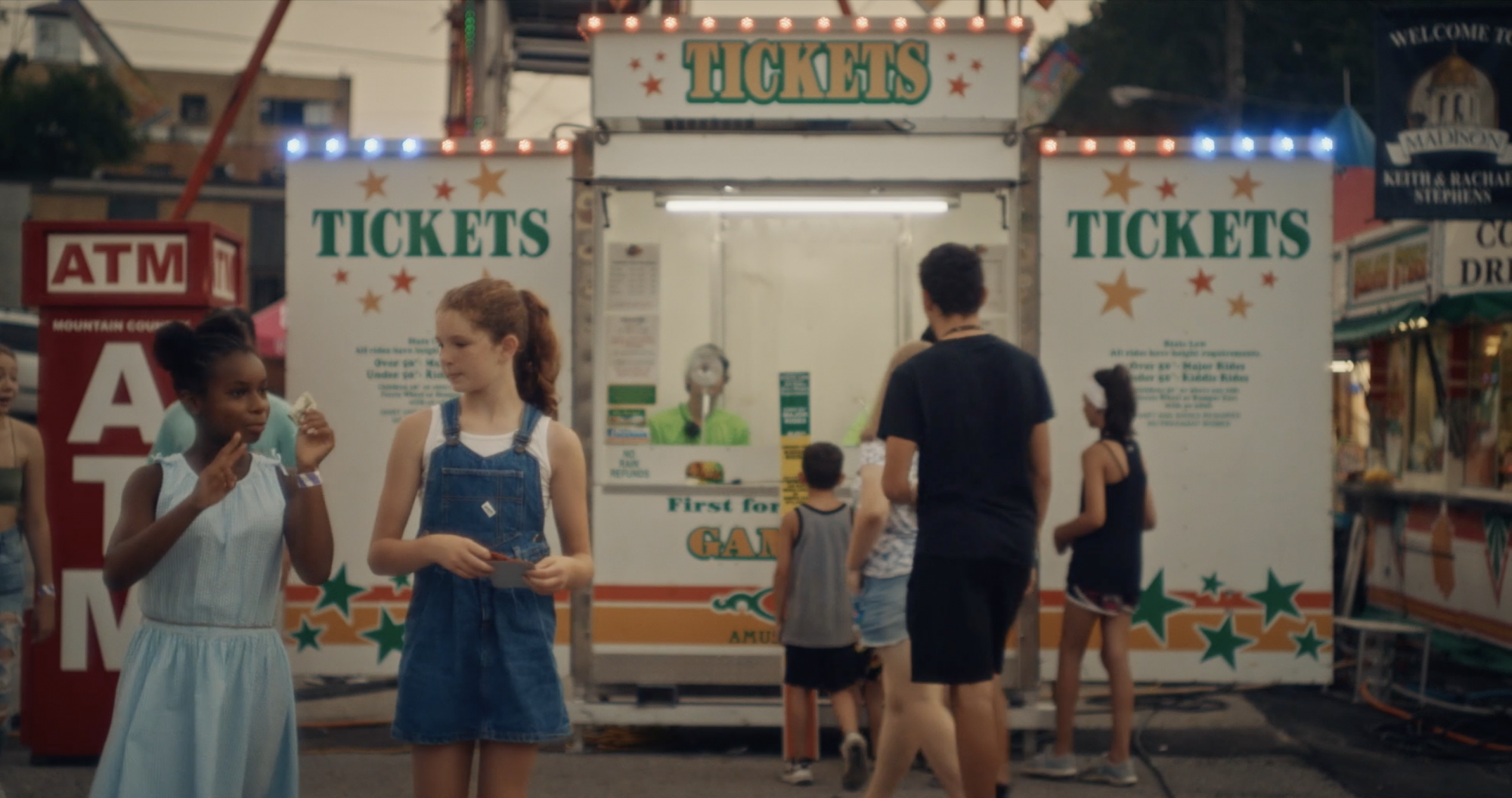
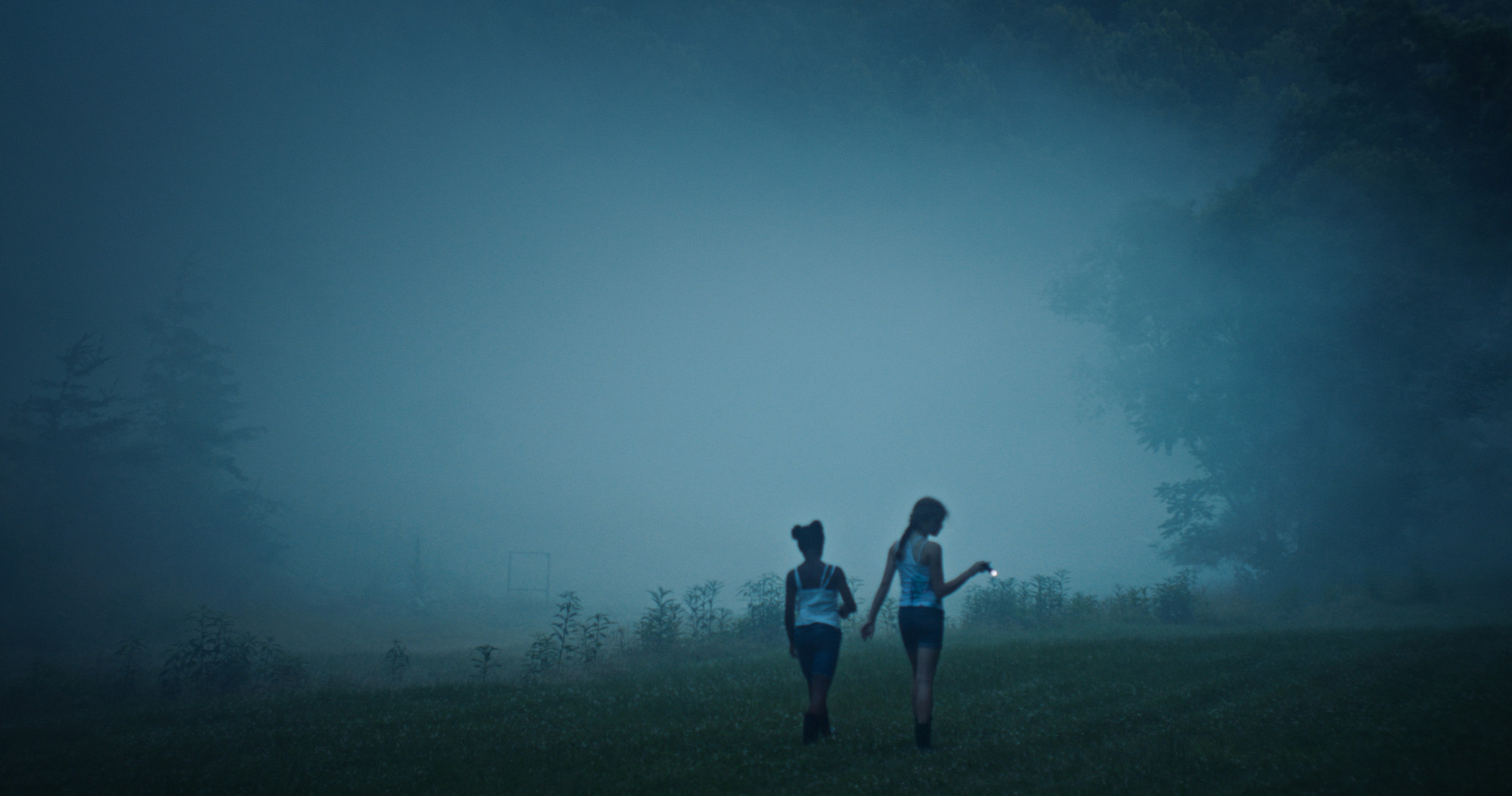
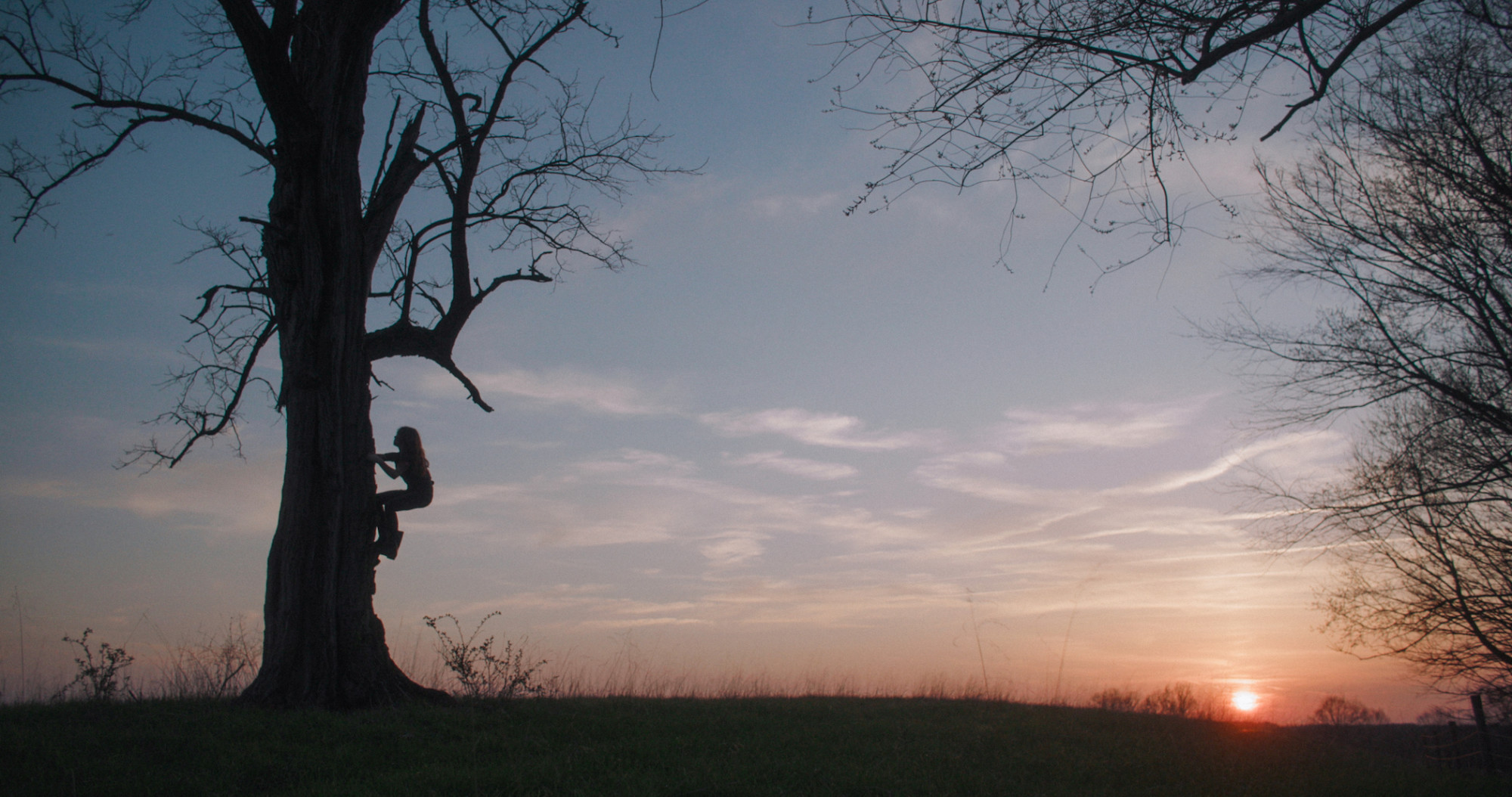
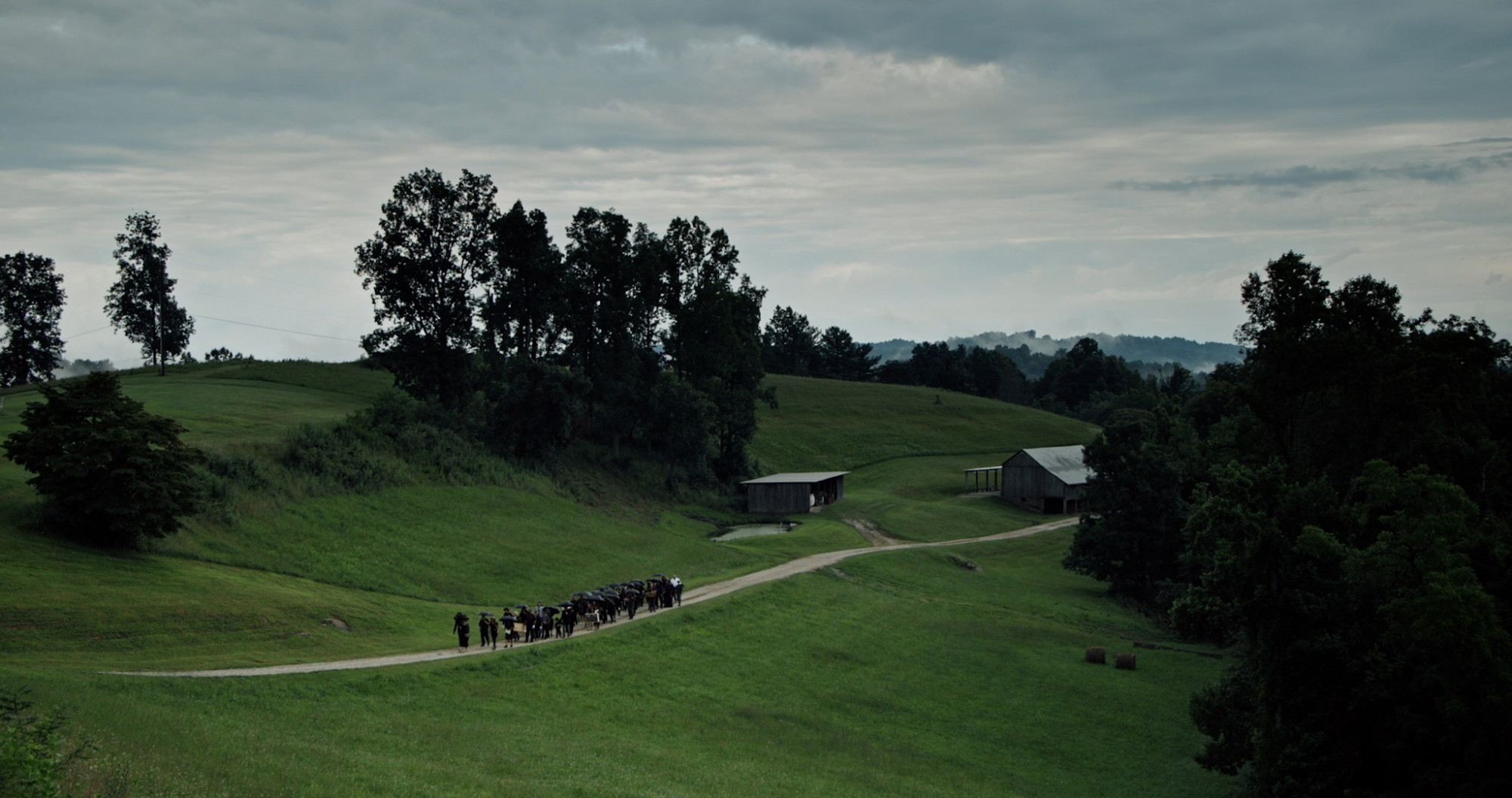
Stills from King Coal by Curren Sheldon
What were Lanie and Gabby's parents’ reactions to this type of story?
I always described this as sort of a fable, sort of a documentary, sort of fairy tale—like, “They're not going to be scripted, but they're also going to be asked to do things.” Their parents were always down for whatever, and the girls were enjoying themselves. I give them a lot of credit because they trusted us to do this wacky thing that we couldn't really describe.
Lanie's dad is very much still in the coal industry, and he was skeptical of the funeral. And funny enough, we asked everybody to wear black, and he wore a white shirt. I don't know if it was intentional. But his wife texted me after the funeral and said that he felt relieved at the end of it because of the way we handled things, the complications that were shared at the funeral. When we showed the film to the families before it came out, he was just kind of speechless and got really choked up. And the only thing he could say to me was, “You told the truth.” And that was like—job done. I don't care what anyone else says.
I kept thinking as I was watching: I wonder what the world would look like in which we own the land. Do you know what I mean?
I totally think about that, too. And that's [also] one of the reasons why I made this. My pawpaw has always said, since I was little, None of this had to look like this. You know, from the beginning, with people from the outside owning it.
Right. How would this have all turned out if there would have been some local investment? Not to say it would have been wonderful, right—extraction is still extraction. But we would’ve provided for ourselves better I think. This whole King Coal mythology can really erase the idea that you have any agency.
And without the king you’re nothing. The lack of agency, that's what's really sad. Queen Elizabeth II died when I was making this film, and it sounds silly, but I was following how people were memorializing her. And it was really interesting. There's the physical thing: bringing gifts, food, flowers. But also people talked about this feeling of emptiness: Who could ever replace the Queen? It was such a vacuum, you could tell. Part of their identity was wrapped up into this, and how they wanted to grieve was really interesting to me, and their fear that there would never be another one like her, and that desire for replacement monarchy instead of liberation. When King Coal dies, to choose what we want for ourselves—it's much harder to do that. It's actually easier to wait for the next king—and not easy, it’s painful and brutal—but it requires little to no agency.
It’s like destructive or dysfunctional relationship patterns. The pain that is familiar is more comfortable than an unknown that might actually be better. That's just human nature.
One of the things we want to do with the end is like—the end is the beginning, right? With an end, there comes a new beginning, and until we acknowledge that end, we will never see a new beginning.
For more stories about Southern film, order a copy of Oxford American's 2023 Film Issue.



